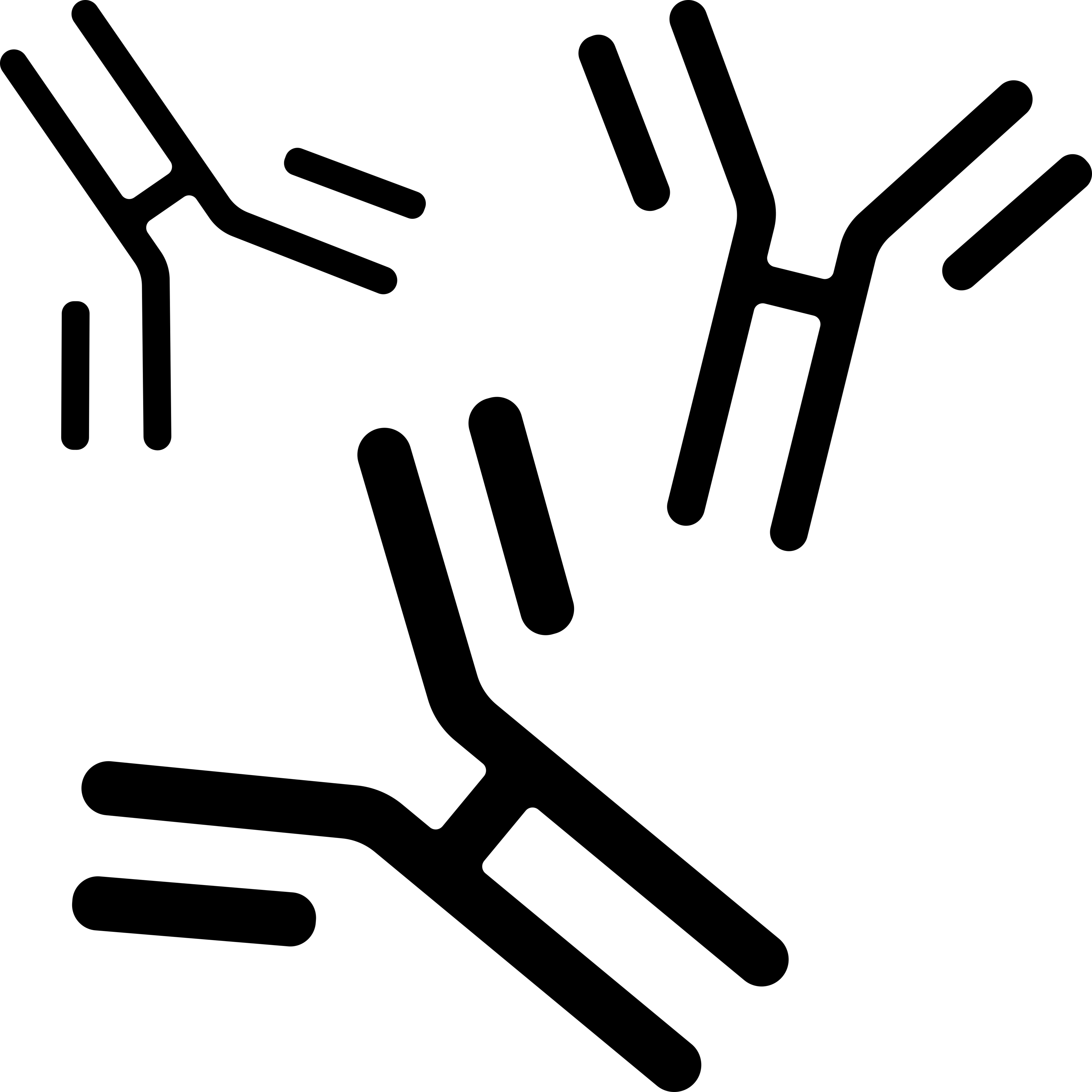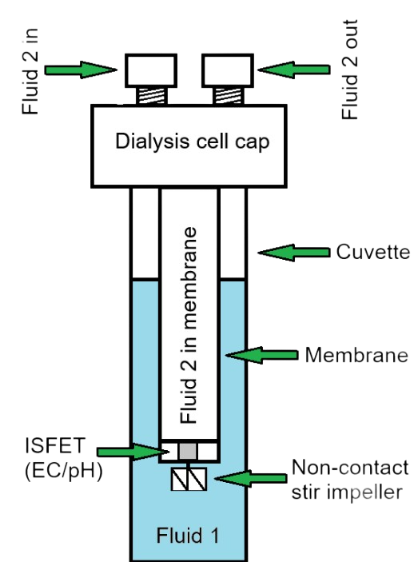Technology
Generate more data in less time with comprehensive, precise results.
-
Detect problematic instabilities early in development
-
Monitor the rate and reversibility of aggregation
-
Formulate complex or high-concentration biologics
-
Define design space to support manufacturing decisions
A New Layer of Insight, Without the Overhead
-
🧪 One sample, many conditions
Replace discrete sample prep with a continuous gradient -
🔍 More than endpoint data
Monitor behavior in real time as conditions evolve -
⚙️Standard cuvettes, no special consumables
Drop into existing workflows, no custom plates required -
🔧 Do more with what you already have
No need to replace, just amplify what your current tools can do
🚀Beta Customer Program
Looking to try out the cuvette technology?
The program aims to offer customers:
- Early access to our cuvette-based spectroscopic technology
- Early Adopter pricing before commercial launch pricing applies
- Opportunity to give input and influence the final design and features
Plug and Play Cuvette-Based Format
The user-friendly device can be reused with standard cuvettes and inserted into any cuvette compatible analytical instrumentation, no modifications needed, for enhanced data under a wide range of formulation conditions.
In this configuration, Fluid 1 contains the biologic sample, while Fluid 2 delivers buffer or excipient solutions through the dialysis membrane, enabling controlled solvent exchange and real-time monitoring.
Integrated Functions:
Automatic Continuous Mixing
-
Provides real-time analysis of how biologics respond to gradual changes in formulation conditions, such as buffer or excipient composition
-
Allows identification of critical thresholds for aggregation, solubility, and stability without manual, discrete concentration testing
Dialysis
-
Monitors changes in aggregation or stability as chemical composition shifts using an internal semi-permeable membrane
-
Suitable for studying solvent exchange, pH adjustment, excipient stress, or reversibility studies
Electrode Assembly
-
Applies electric fields to study conformational changes or stress responses
-
Fully integrated within the cuvette design
Non-Contact Stirring
- Maintains gentle, consistent fluid circulation within the cuvette
-
Proven to cause significantly less damage to biologic samples compared to traditional agitation methods.
Built-in Sensors for Electrolyte Concentration and pH
-
Newly available ISFET sensors are used for measuring electrolyte concentration in the cell, as well as pH (Ion Selective Field Effect Transistors, from Sentron, Inc.)
Recent Publications
Technical Notes & Applications
Effect of Excipients on Biologics
Automatic continuous mixing within the cuvette allows for controlled, real-time observation of how excipients influence the stability of biologic drugs. As excipient concentration increases gradually during the experiment, the system captures when and how the biologic transitions between stable and unstable states. It is particularly applicable to determining design space after narrowing down excipient candidates or for defining formulation specifications for high-concentration biologics. This eliminates the need for labor intensive sample prep and discrete concentration testing.
This example, generated via light scattering, shows how gradually adding salt affects the behavior of a biologic molecule. The curve reveals a threshold where structural or interaction changes occur, followed by stabilization at higher concentrations. This helps identify the point where the formulation performs best, without needing to prepare multiple separate samples.
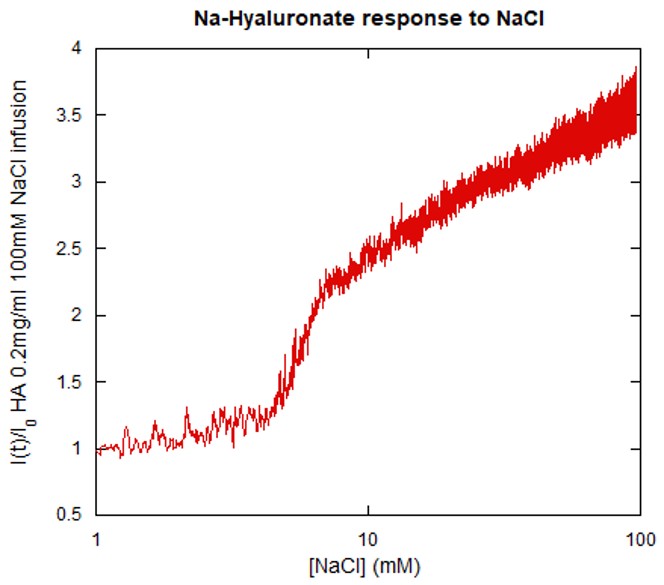
Monitoring Reversibility With Dialysis
The dialysis setup enables real-time monitoring of reversible and irreversible changes in biologics. By performing complete dialysis cycles, it becomes possible to assess whether observed instabilities (e.g., aggregation or unfolding) are reversible.
In this example, mRNA is denatured using guanidine HCl, and the light scattering experiment tracks whether its structural changes are reversible upon removal and reintroduction of the denaturant.

Dilution Measurements- Mw, Kd, and A2/B22
The system’s automatic continuous mixing, when used with light scattering instrumentation, can be used to generate dilution profiles for key parameters such as molecular weight (Mw), the dissociation constant (Kd), and second virial coefficients (A2/B22). These measurements are valuable for understanding biologic solubility, stability, and binding interactions.
-
A2/B22 values reflect the interaction between a protein and its environment, where positive values suggest good solubility and stability and negative values may indicate a tendency toward aggregation.
-
Kd represents the binding strength between two biomolecules, such as a protein and ligand.
In the example shown, an oligopeptide is gradually infused into the cuvette. Its slightly positive A2 value suggests mild repulsive interactions and good solubility, indicating a stable formulation.
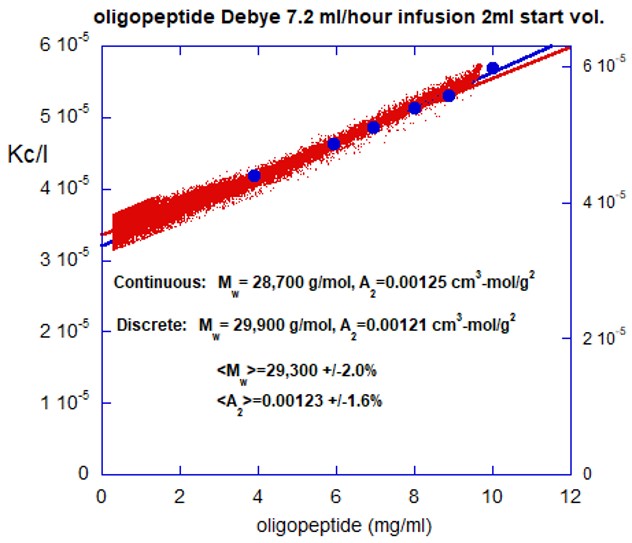
Measuring Dissolution of Solids
The automatic continuous mixing capability can be used to monitor the dissolution of powders, lyophilization agents, and other solids of importance by continuous infusion. Monitoring dissolution in real-time reveals when the process is complete, saving time and optimizing the dissolution process. Understanding dissolution behavior is important for predicting how a biologic behaves in a formulation and how a formulation may perform in the body.
This experiment demonstrates real-time tracking of solid dissolution using continuous mixing. As gelatin particles dissolve at 40 °C, the scattering intensity increases and levels off, indicating when dissolution is complete. This approach enables efficient assessment of dissolution kinetics without manual sampling.
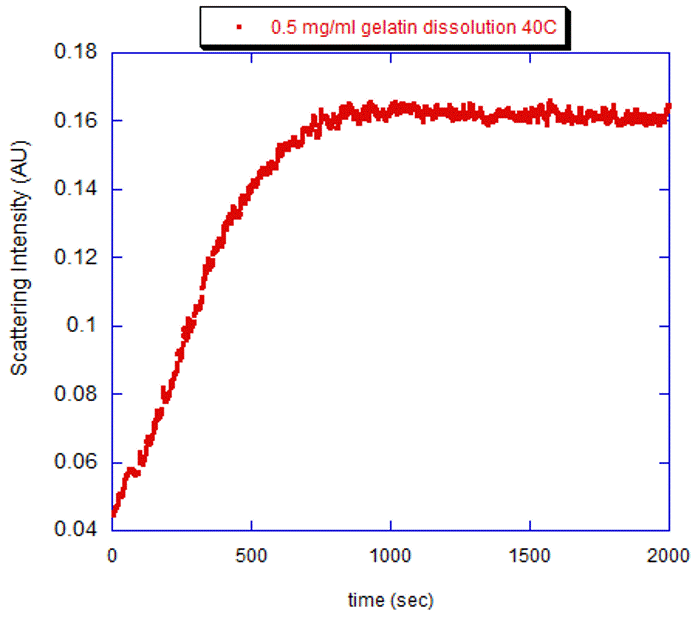
Interested in exploring more technology from Tulane?
Check out ARGEN- lab instrumentation invented by Professors Wayne Reed and Curtis Jarand, developed into the successful spin off company, Fluence Analytics (acquired by Yokogawa). ARGEN analyzes biopolymers in real-time under stimulated stress conditions and compares formulation conditions run in parallel.

